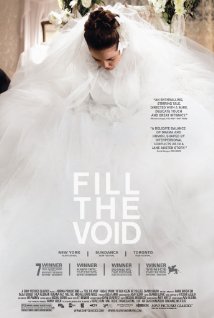
Fundamentalism has it right, were not the belonging and other satisfactions it provides bought at the cost of autonomy and individual freedom. And Fill the Void, which deals with the Ultra-Orthodox Haredim of Tel Aviv, should warm the hearts of the Christian and Muslim counterparts of the characters portrayed in the film. On a global level fundamentalism creates the conditions under which men and women can function and thrive. For example, the attraction to sexual differentiation and prescribed roles which brings many who have strayed back into the fold (and which lies at the heart of many these ritual bound credos) can be understood as a relief for refugees from modernity with its war torn sexuality and Pandora's Box of ambivalence. While remaining totally faithful to the world it describes, Rama Burshtein's film complicates matters, not so much extrinsically by virtue of her characters living in the 21st Century, but intrinsically by playing on the struggle between tradition and free will. Free will is of course a very Jewish idea and even within the confines of the traditional society Fill the Void inhabits, one is almost disconcerted by its presence. In a nutshell, the void of the title is the result of the death of Esther (Renana Raz) during the birth of her son Mordechai. Yes the film takes place on Purim and as we all know Esther and Mordechai are key figures in the Purim tale. However, the real question is how Yochay (Yiftach Klein), Esther's grieving husband, will raise his child. Will he move to Belgium where a prospective new bride awaits him or will Esther's younger sister Shira (Hadas Yaron) become Yochay's new wife? In one sense you have a classic Yiddish melodrama of the kind that played on Second Avenue in the Golden Age of Yiddish theater. Yet there are differences, the Yiddish theater portrayed a secular world and this is a religious one. The language of the movie is Hebrew. And most importantly the repertoire of emotion that eventually pulls the heartstrings of both the characters and the audience would have been almost biblical, were it not for the fact that it was so shockingly modern.
{This was originally posted to The Screaming Pope, Francis Levy's blog of rants and reactions to contemporary politics, art and culture}